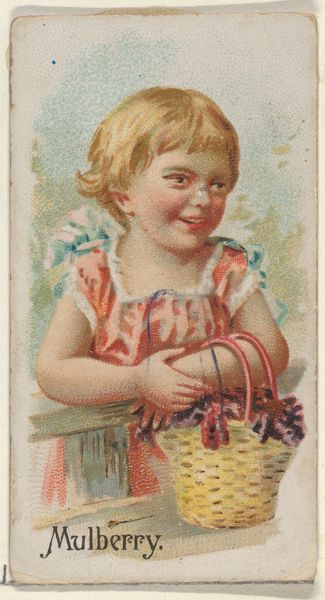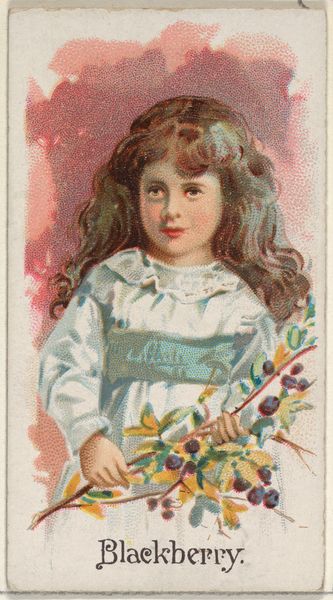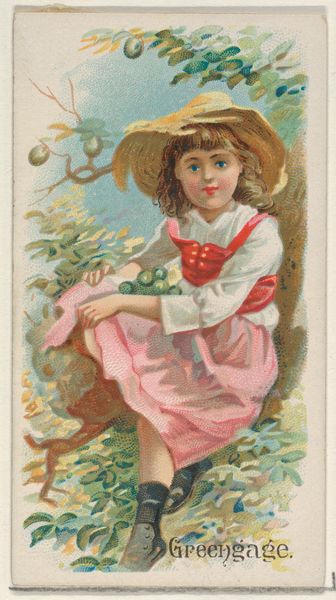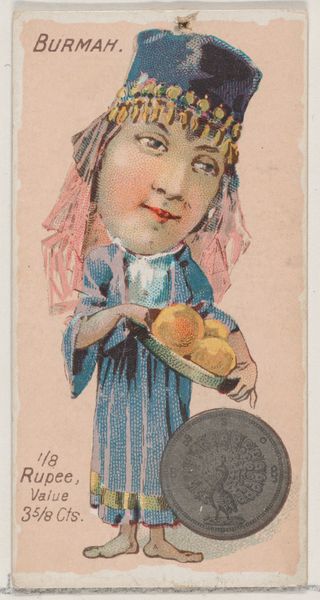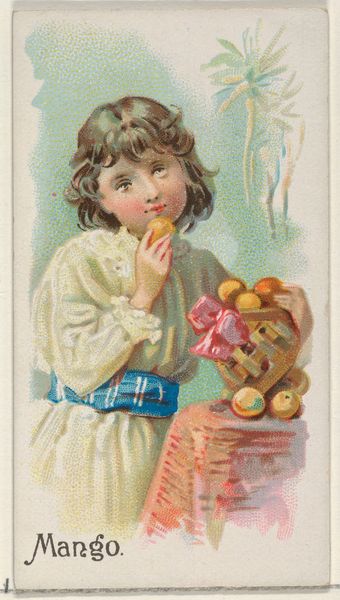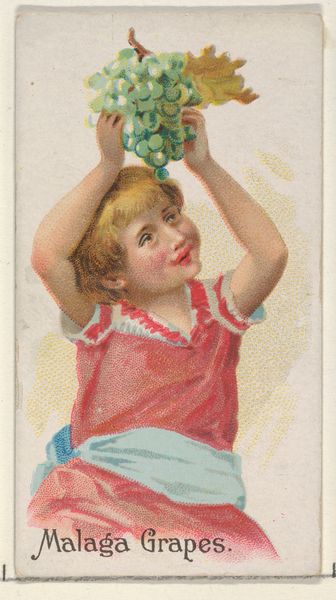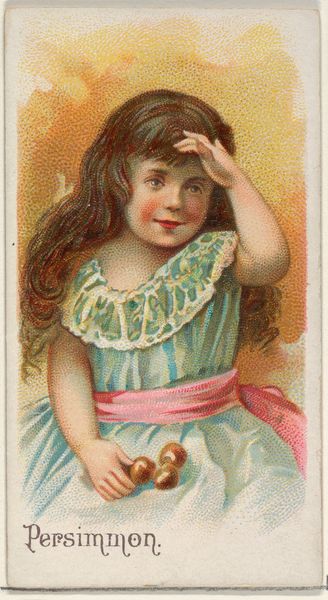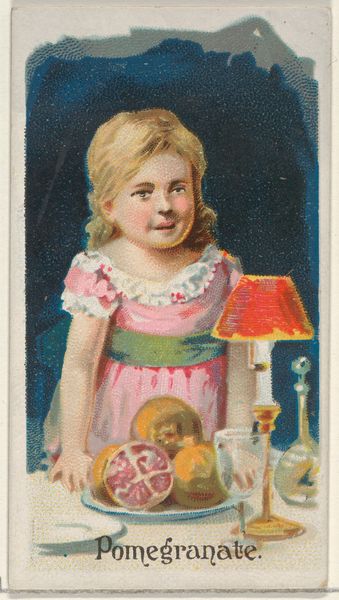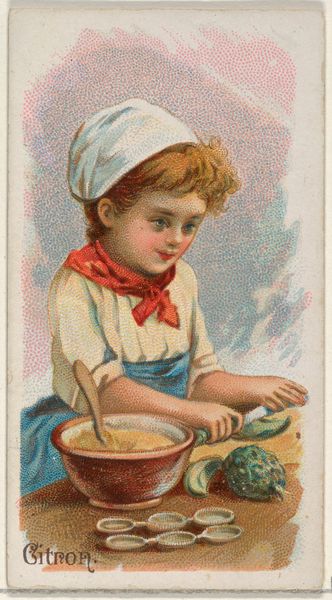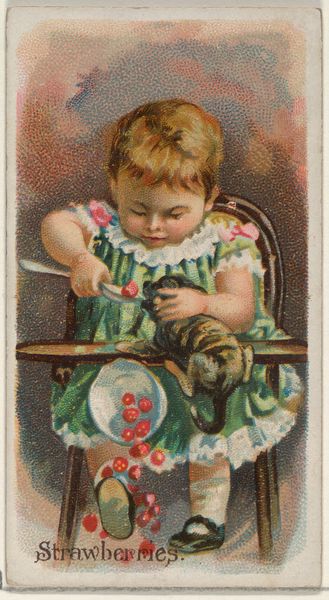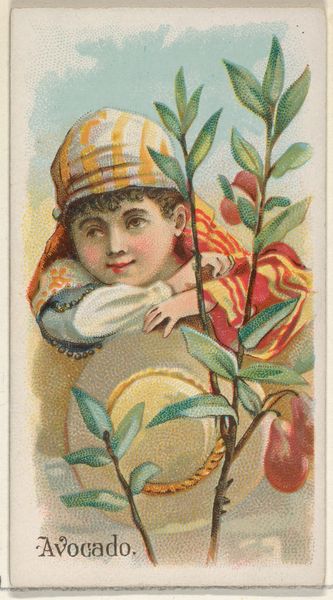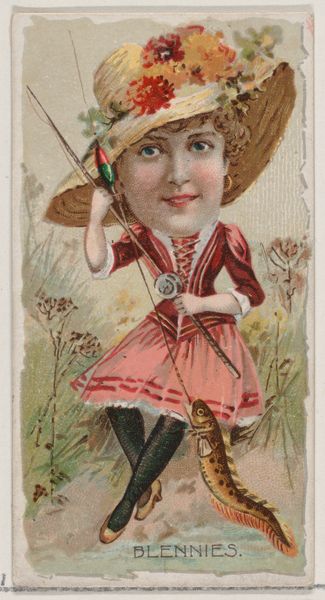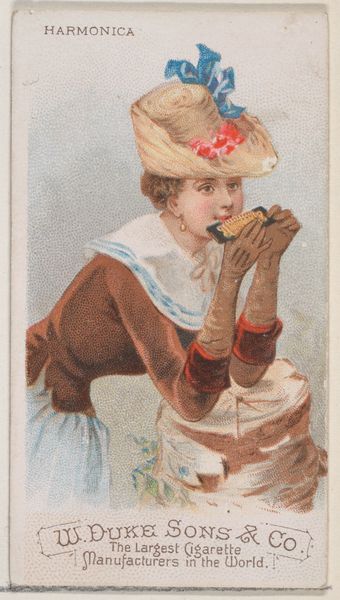
Quince, from the Fruits series (N12) for Allen & Ginter Cigarettes Brands 1891
0:00
0:00
drawing, coloured-pencil, print
#
portrait
#
drawing
#
coloured-pencil
# print
#
caricature
#
coloured pencil
Dimensions: Sheet: 2 3/4 x 1 1/2 in. (7 x 3.8 cm)
Copyright: Public Domain
Curator: Here we have "Quince, from the Fruits series (N12) for Allen & Ginter Cigarettes Brands," created in 1891. It's a color print and drawing, held here at the Metropolitan Museum of Art. Editor: My initial impression is sweetness tempered with something almost melancholic. There's a tenderness to the girl’s face, but also a strange stillness, an unease. The limited color palette, with its faded rose background, also feels significant. Curator: These trade cards offer fascinating glimpses into late 19th-century consumer culture and the era’s approach to constructing identity. Consider Allen & Ginter. Their promotional strategy was heavily reliant on gendered visual language, particularly on ideas of youth, innocence, and domesticity. What social and cultural power structures are subtly promoted? Editor: Indeed. The very depiction of a girl, likely of working-class origins if the product targets are anything to go by, is a potent symbol. The figure presents not just a picture of beauty, but more fundamentally, an emblem of fertility, health, and even the idea of America as the land of plenty, a pastoral paradise. Curator: Precisely. The quince fruit she holds also ties into this idea of health and well-being. It also suggests broader economic ties across an expanding market fueled by advertising. Also consider that at this time period ideas about beauty, race, and gender were highly prescriptive and influenced the viewer's perceptions of normalcy. Editor: Beyond its surface appeal, could we also say it embodies an ideal of American femininity, then? Clean, youthful, yet silently industrious. Her clothing, seemingly modest, also suggests purity, further solidifying its role in constructing moral identity within consumerism. Curator: Without a doubt. What appear to be subtle artistic and marketing decisions reveal how promotional visuals not only created and sustained brands, but also, how it reproduced ideologies about identity, commerce, and access to power. Editor: I think that’s helped me look at it differently, seeing not just a quaint portrait, but a small window into how cultural messages are embedded and circulated within what appears to be something innocuous, which I still see as strangely beautiful and melancholy, just more thoughtfully now. Curator: Yes, I am in agreement. Recognizing the narratives these seemingly simple visuals carry with them invites more nuanced readings of how history influences what we may perceive as either beautiful or, in many ways, exclusionary.
Comments
No comments
Be the first to comment and join the conversation on the ultimate creative platform.
